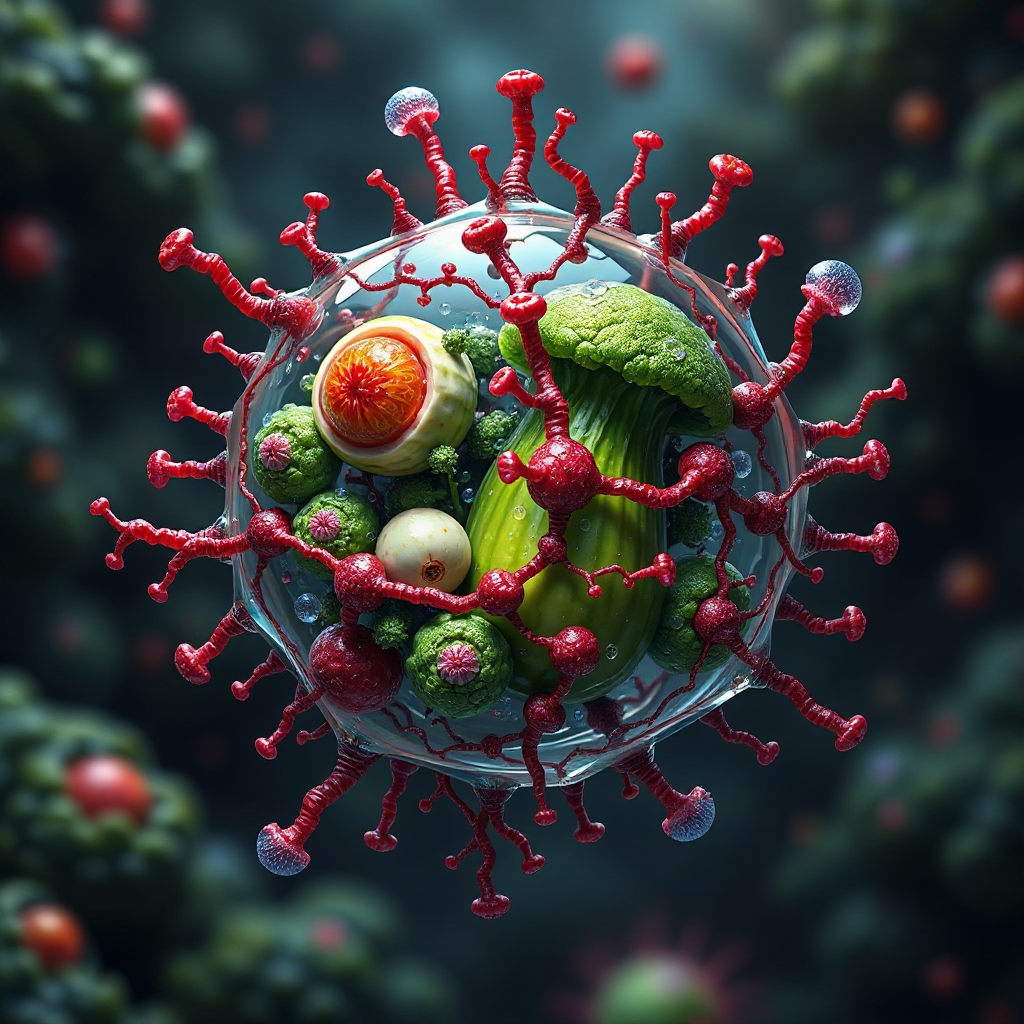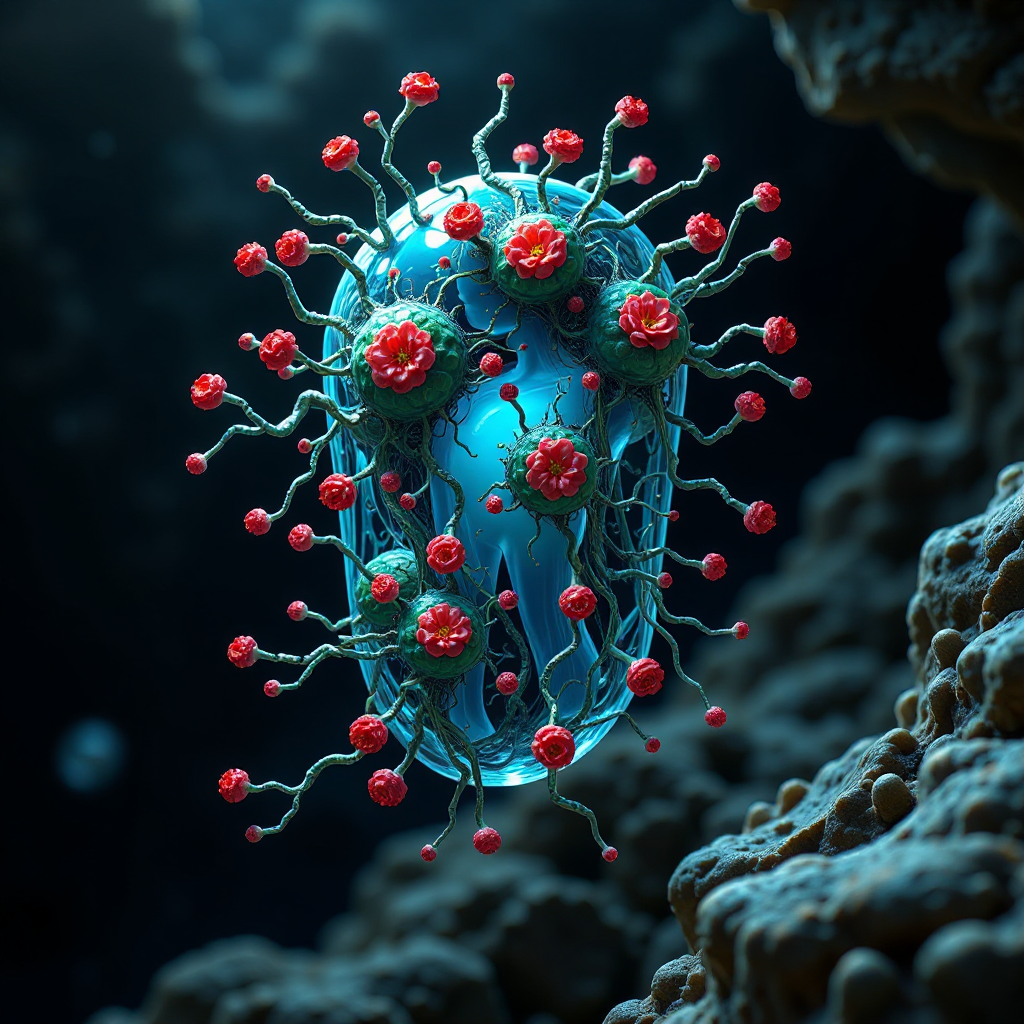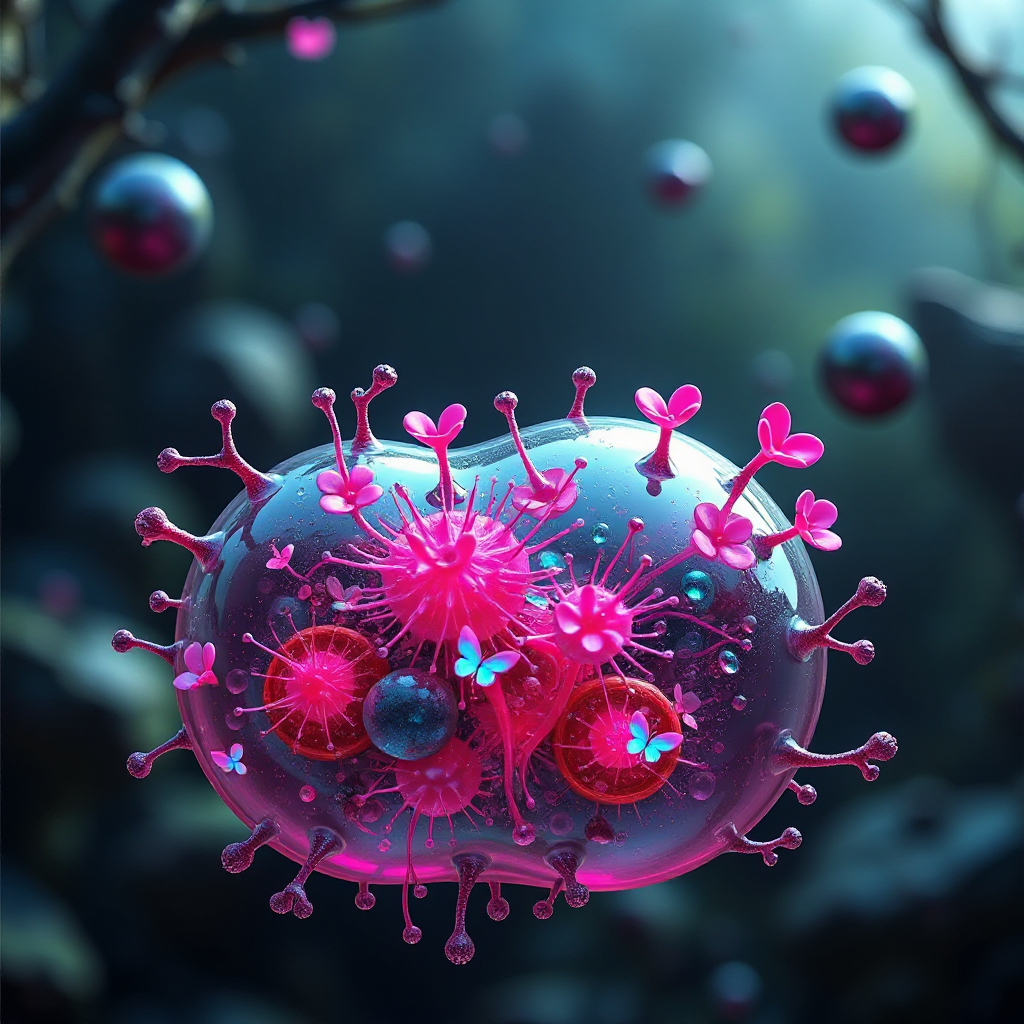Understanding Somatostatinoma and Its Key Characteristics

Somatostatinoma is a rare neuroendocrine tumor that accounts for less than 2% of all pancreatic cancers. It typically originates in the pancreas or the duodenum, with most cases arising from the δ cells of these organs. Within the pancreas, tumors are often found in the head, body, or tail, while the duodenum contributes to nearly 19% of cases. The hallmark of this condition is the excessive secretion of somatostatin, a hormone that regulates various physiological functions. Overproduction of somatostatin can disrupt hormone balance, leading to elevated blood glucose levels, gallstones, and digestive issues like fat intolerance.
Key Takeaways
Somatostatinoma is a rare tumor that affects hormones. It can cause belly pain and weight loss.
Finding it early is very important. If you feel sick often or have diarrhea a lot, see a doctor quickly.
Surgery is the best way to treat small tumors. It might even cure it. Other treatments are used for bigger or spread-out tumors.
Checking hormone levels and using scans can show how the tumor is doing. This helps doctors decide on treatments.
Knowing the signs and related problems can help spot somatostatinoma early. This can make treatments work better.
What Is Somatostatinoma?

Overview of Somatostatinoma
Somatostatinoma is a rare type of neuroendocrine tumor that produces excessive amounts of somatostatin, a hormone responsible for regulating various bodily functions. These tumors often inhibit both endocrine and exocrine processes, which can lead to a range of symptoms. You may experience abdominal pain, unexplained weight loss, or other signs that seem unrelated at first. What sets somatostatinoma apart from other neuroendocrine tumors is its specific location and the clinical syndrome it can cause. Most of these tumors develop in the pancreas, particularly in its head, body, or tail. However, some cases arise in the duodenum, the first part of the small intestine.
Approximately 75% of somatostatinomas are cancerous, meaning they have the potential to spread to other parts of the body. Despite their severity, these tumors remain extremely rare. They occur in about 1 in 40 million people, making them one of the least common neuroendocrine tumors.
Rarity and Prevalence
The rarity of somatostatinoma stems from several factors. These tumors account for less than 2% of all pancreatic cancers and are classified as the rarest type of gastrointestinal neuroendocrine tumor. Their symptoms are often vague, which makes diagnosis challenging. For instance, you might notice symptoms like digestive issues or gallstones, but these can easily be mistaken for other conditions. This lack of clear indicators often delays diagnosis, sometimes for months or even years.
The low prevalence of somatostatinoma also contributes to its rarity. More than half of these tumors are found in the head of the pancreas, but their occurrence in the duodenum adds to the complexity of identifying them. Because of this, you may need specialized tests and imaging to confirm the diagnosis.
Clinical Characteristics of Somatostatinoma
Common Symptoms
Somatostatinoma often presents with symptoms that may seem unrelated at first. You might experience abdominal pain, nausea, or vomiting. Other common signs include loss of appetite, frequent diarrhea, and unintentional weight loss. These symptoms can disrupt your daily life and may worsen over time.
Pancreatic somatostatinomas often cause glucose intolerance or diabetes. This happens because excess somatostatin inhibits insulin secretion. You may also notice fatty stools or persistent nausea. If the tumor originates in the duodenum, symptoms like abdominal pain and jaundice may occur due to mechanical obstruction.
Tip: If you experience any of these symptoms persistently, consult a healthcare provider for further evaluation.
Associated Conditions
Somatostatinoma is frequently linked to other medical conditions. Diabetes mellitus is one of the most common. This occurs due to the tumor's effect on insulin regulation. Gallstones may also develop because somatostatin reduces gallbladder contractions. Chronic diarrhea is another condition often associated with this tumor.
Condition | Description |
|---|---|
Diabetes mellitus | A common condition associated with somatostatinoma syndrome. |
Gallstones | Occur due to reduced gall bladder contraction, linked to somatostatinoma. |
Diarrhea | Another symptom associated with somatostatinoma syndrome. |
These associated conditions can complicate the diagnosis. You may need a combination of tests to identify the underlying cause.
Variability in Presentation
The symptoms of somatostatinoma can vary depending on its location. Pancreatic tumors often lead to glucose intolerance, abdominal pain, and fatty stools. They may also reduce stomach acid production. Duodenal tumors, on the other hand, primarily cause mechanical obstruction. This can result in abdominal pain, nausea, or vomiting.
If the tumor spreads to other parts of your body, you might experience jaundice or significant weight loss. These metastatic symptoms can make the condition more challenging to manage.
Understanding the variability in symptoms is crucial. It helps you and your healthcare provider identify the condition early and plan appropriate treatment.
Diagnosing Somatostatinoma
Biochemical Markers
Diagnosing somatostatinoma often begins with identifying specific biochemical markers in your blood. Doctors typically measure somatostatin levels, as these tumors cause an abnormal increase in this hormone. Elevated somatostatin levels can disrupt your body's hormonal balance, leading to symptoms like diabetes or gallstones.
Other markers, such as chromogranin A, may also be tested. This protein is commonly elevated in neuroendocrine tumors and can help confirm the diagnosis. Regular monitoring of these markers can provide valuable insights into the tumor's activity and progression.
Imaging Techniques
Imaging plays a crucial role in locating somatostatinomas and assessing their spread. Several advanced techniques are available to help doctors visualize the tumor:
Imaging Technique | Purpose |
|---|---|
Computed Tomography (CT) | Tumor localization and disease severity |
Magnetic Resonance Imaging (MRI) | Tumor localization and disease severity |
Endoscopic Ultrasound (EUS) | Tumor localization and disease severity |
Somatostatin Receptor Scintigraphy (SRS) | Tumor localization and assessing spread |
Positron Emission Tomography (PET) | Tumor localization and assessing spread |
Among these, somatostatin receptor scintigraphy (SRS) is particularly effective. During this procedure, a doctor injects radioactive octreotide into your veins. This substance binds to tumor cells with somatostatin receptors, allowing a radiation-measuring device to create detailed images of the tumor's location.
Biopsy and Histopathology
A biopsy is often necessary to confirm the diagnosis of somatostatinoma. During this procedure, a small sample of the tumor tissue is collected for analysis. Immunohistochemical evaluation is crucial in this process. Pathologists use specific stains, such as somatostatin and chromogranin A, to identify the tumor cells.
This step not only confirms the diagnosis but also provides information about the tumor's characteristics. Understanding these details helps your doctor develop a personalized treatment plan tailored to your needs.
Treatment Options for Somatostatinoma

Surgical Approaches
Surgery is often the most effective treatment for somatostatinoma, especially when the tumor is localized. If your tumor is confined to the pancreas or duodenum, doctors may recommend surgical resection to remove it completely. This approach can potentially cure the condition. When the tumor has spread to the liver, surgeons might perform a liver resection to remove the affected portion. In some cases, metastasectomy, which involves removing metastatic tumors, can also be a curative option. These procedures depend on the tumor's location and size, so accurate imaging and diagnosis play a critical role in planning your treatment.
Non-Surgical Treatments
If surgery isn’t an option, non-surgical treatments can help manage somatostatinoma. Doctors often prescribe somatostatin analogs like octreotide or lanreotide. These medications reduce hormone production and slow tumor growth. For advanced cases, chemotherapy may target cancer cells and control the disease. Molecular targeted therapies, such as tyrosine kinase inhibitors, specifically attack cancer cells while sparing healthy tissue. Another promising option is peptide receptor radionuclide therapy (PRRT), which uses radioactive substances to destroy tumor cells and improve survival rates. These treatments can be tailored to your specific condition, offering a range of options to manage the disease effectively.
Supportive Care
Supportive care focuses on improving your quality of life by addressing symptoms caused by somatostatinoma. If you experience glucose intolerance or diabetes, antidiabetic medications can help regulate blood sugar levels. Pancreatic enzyme supplements may reduce diarrhea and improve nutrient absorption. Your doctor might also recommend dietary adjustments to manage symptoms like fat intolerance. These supportive measures work alongside primary treatments to ensure you feel better and maintain your overall health.
Note: Discuss all treatment options with your healthcare provider to determine the best approach for your condition.
Importance of Early Diagnosis and Management
Prognosis and Outcomes
Early diagnosis of somatostatinoma significantly improves your chances of better outcomes. When detected early, localized tumors can often be removed surgically, offering a potential cure. Even in cases where the tumor has spread, timely treatment can slow its progression and manage symptoms effectively.
The prognosis depends on several factors, including the tumor's size, location, and whether it has metastasized. For localized tumors, survival rates are higher, especially when surgery is successful. Advanced cases may require a combination of treatments, such as somatostatin analogs or chemotherapy, to control the disease. Regular follow-ups and monitoring also play a crucial role in improving long-term outcomes.
Tip: Staying vigilant about persistent symptoms and seeking medical advice early can make a significant difference in your prognosis.
Challenges in Diagnosis
Diagnosing somatostatinoma can be challenging due to its vague and nonspecific symptoms. You might experience abdominal pain, diarrhea, or unexplained weight loss, which can easily be mistaken for other conditions. These symptoms often lead to delays in diagnosis, sometimes lasting months or even years.
Doctors rely on a combination of diagnostic tools to confirm the condition. Blood tests help measure hormone levels, while imaging techniques like CT scans, MRI, and endoscopic ultrasound locate the tumor. Somatostatin receptor scintigraphy is particularly useful for identifying tumors with somatostatin receptors. Despite these advanced tools, the rarity of somatostatinoma adds complexity to the diagnostic process.
Common challenges in diagnosis include:
Vague symptoms like abdominal pain, weight loss, or diarrhea.
Delays caused by the nonspecific nature of these symptoms.
The need for multiple diagnostic tests to confirm the condition.
Understanding these challenges highlights the importance of consulting a specialist if you suspect something unusual. Early and accurate diagnosis can pave the way for effective treatment and better outcomes.
Somatostatinoma is a rare neuroendocrine tumor that disrupts your body's hormonal balance. It often causes symptoms like abdominal pain, weight loss, and digestive issues. Diagnosing this condition involves blood tests, imaging, and biopsies. Treatment options include surgery, medications, and supportive care to manage symptoms. Early detection improves your chances of successful treatment and better outcomes.
You should stay alert to common symptoms that may indicate somatostatinoma:
Loss of appetite
Nausea and vomiting
Abdominal pain
Frequent diarrhea
Unintentional weight loss
If you notice these symptoms, consult a healthcare provider promptly. Early diagnosis can make a significant difference in managing this condition effectively.
FAQ
What causes somatostatinoma?
Somatostatinoma develops when δ cells in the pancreas or duodenum grow abnormally. The exact cause remains unknown, but genetic conditions like multiple endocrine neoplasia type 1 (MEN1) or von Hippel-Lindau syndrome may increase your risk.
Note: Discuss your family history with your doctor to assess your risk factors.
How is somatostatinoma different from other neuroendocrine tumors?
Somatostatinoma specifically overproduces somatostatin, unlike other neuroendocrine tumors. This hormone imbalance leads to unique symptoms like gallstones, diabetes, and fat intolerance. Its rarity and specific biochemical markers also set it apart.
Can somatostatinoma be cured?
Yes, surgery can cure somatostatinoma if the tumor is localized. For advanced cases, treatments like somatostatin analogs or chemotherapy help manage symptoms and slow progression.
Tip: Early diagnosis improves your chances of successful treatment.
Are somatostatinomas always cancerous?
No, not all somatostatinomas are cancerous. However, about 75% are malignant and can spread to other organs. Regular monitoring and early treatment are essential to manage the condition effectively.
What should you do if you suspect somatostatinoma?
If you notice persistent symptoms like abdominal pain, diarrhea, or weight loss, consult a healthcare provider. They may recommend blood tests, imaging, or a biopsy to confirm the diagnosis.
Reminder: Early medical evaluation can lead to better outcomes.
See Also
Exploring Fibrosarcoma: Key Features and Insights
Insights into Malignant Fibrous Histiocytoma and Osteosarcoma
Key Characteristics of Craniopharyngioma Explained Clearly
Cholangiocarcinoma: Essential Characteristics and Understanding
